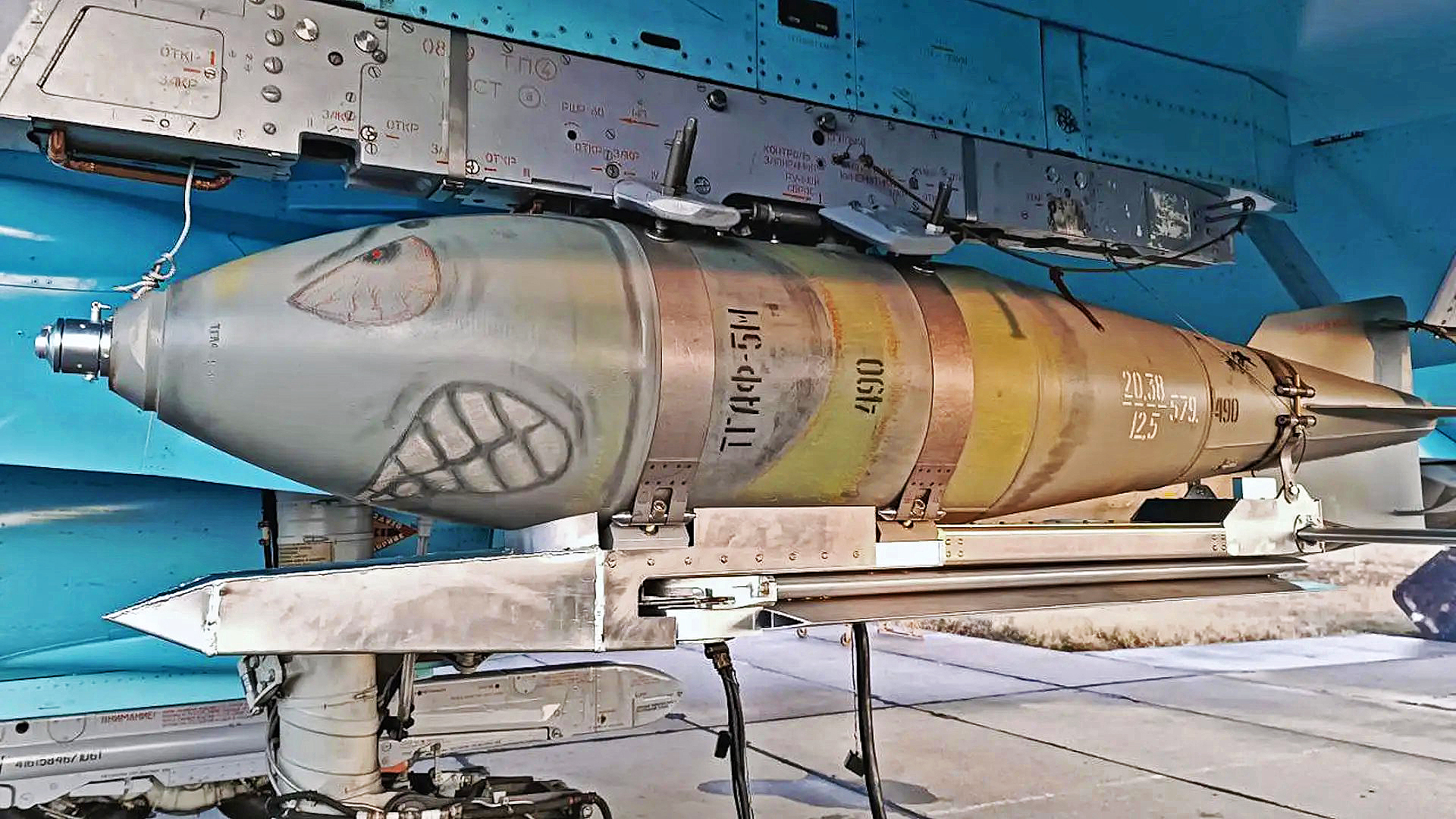Although evidence of Russia using some kind of hastily fielded glide bombs during its war in Ukraine started to appear at the beginning of this year, for many months there was little information available about what was dubbed the “Russian JDAM.” Now, more details have emerged about the UMPK, or Unifitsirovannyi Modul Planirovaniya i Korrektsii, meaning unified gliding and correction module. While hardly comparable to the JDAM in any of its parameters, this wing and guidance kit fitted to a general-purpose bomb continues to be widely used by the Russian Aerospace Forces in the ongoing conflict and has become a major concern for Ukraine.
Back on January 4, 2023, the first information emerged about Russia using general-purpose bombs fitted with wing kits to attack targets in Ukraine. The development was reported on Telegram by the usually well-informed Russian Fighterbomber channel. Later, on February 20, Fighterbomber reported that production of UMPK standoff bomb kits had been ongoing “for four months” and that “hundreds of UMPK bombs had already been dropped.”
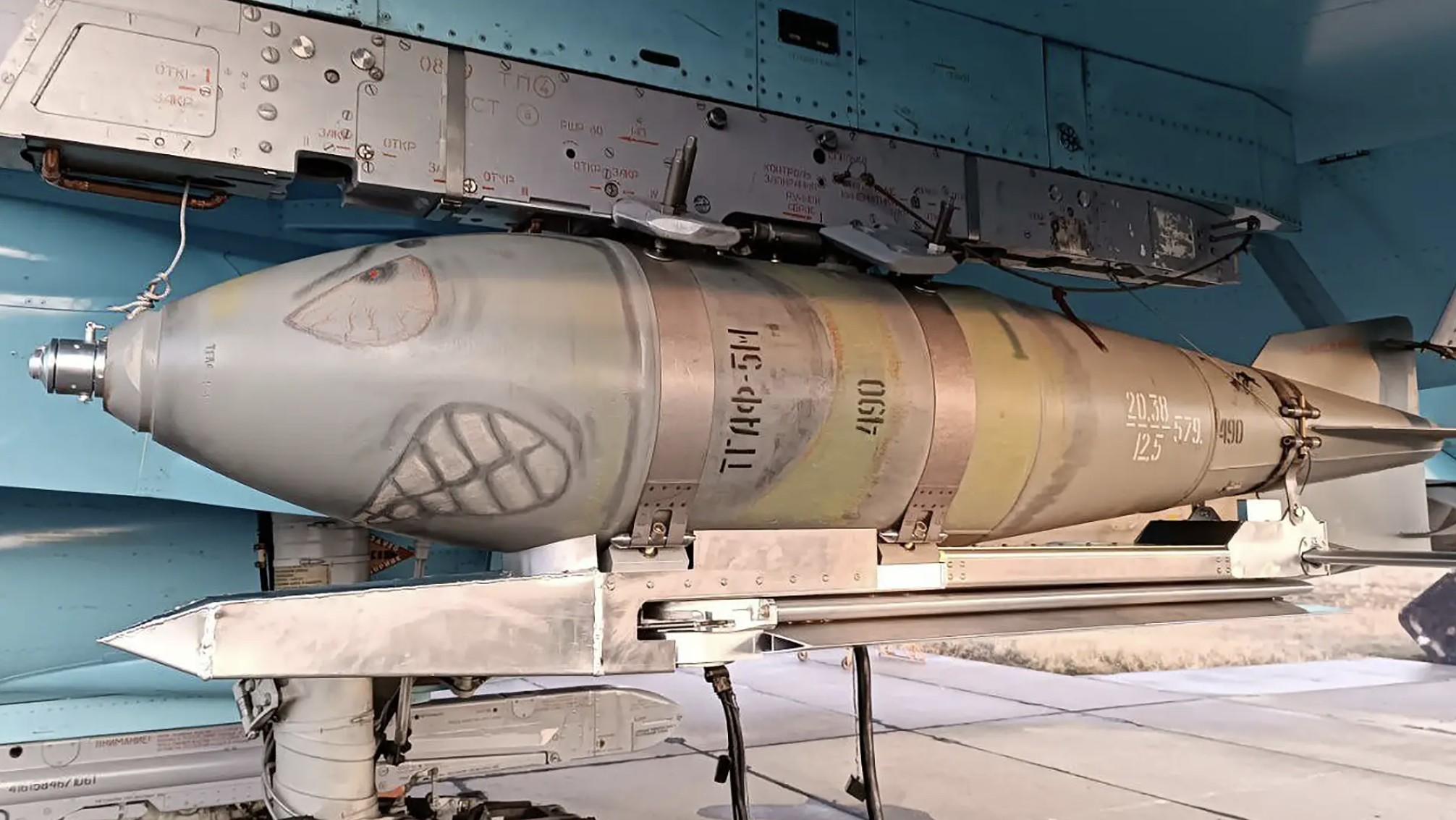
The first official statement from the Ukrainian side appeared on April 4, 2023, when Yurii Ihnat, a Ukrainian Air Force spokesperson, said that the Russians were dropping “up to 20 gliding bombs a day.” Ihnat continued: “They launch them from Su-35 Flanker and Su-34 Fullback aircraft, which do not enter our air defense zone.” Since then, there have been repeated statements from Ukrainian officials reflecting on the difficulty of intercepting these weapons, which have been described as “almost impossible to shoot down.”
Russia officially confirmed the use of such bombs in a May 8, 2023, communiqué in which it stated that “a Su-34 fighter-bomber with UMPK module bombs struck a location of foreign mercenaries near the village of Ivanovka near Kharkiv.”
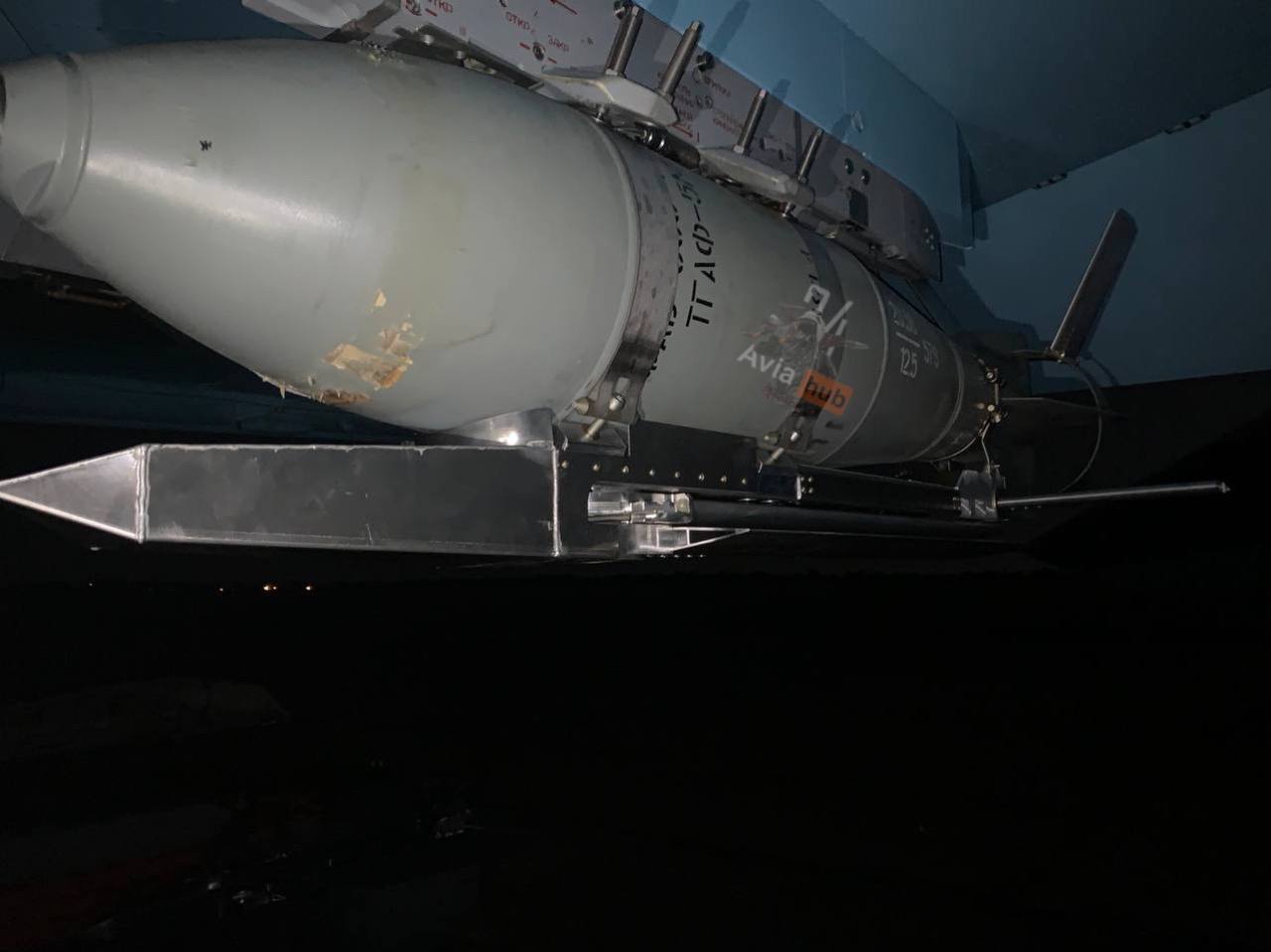
The wing kits allow for Russian aircraft to launch indirect attacks on targets that would otherwise put them at to great of risk to do so directly due to Ukraine ever-evolving anti-aircraft defenses. Otherwise, much more expensive and complex standoff weaponry would need to be used and Russia’s limited supply of these weapons has been put under extreme pressure by the prolonged war effort.
An idea, years in the making
The idea of a low-cost kit converting an iron bomb into a guided munition is an old one. In the United States, such work began in the early 1990s and eventually resulted in the Joint Direct Attack Munition (JDAM) program. You can read about how that program came to be here. JDAM also now includes an Extended Range version with additional wings, which has been supplied by the United States to Ukraine.
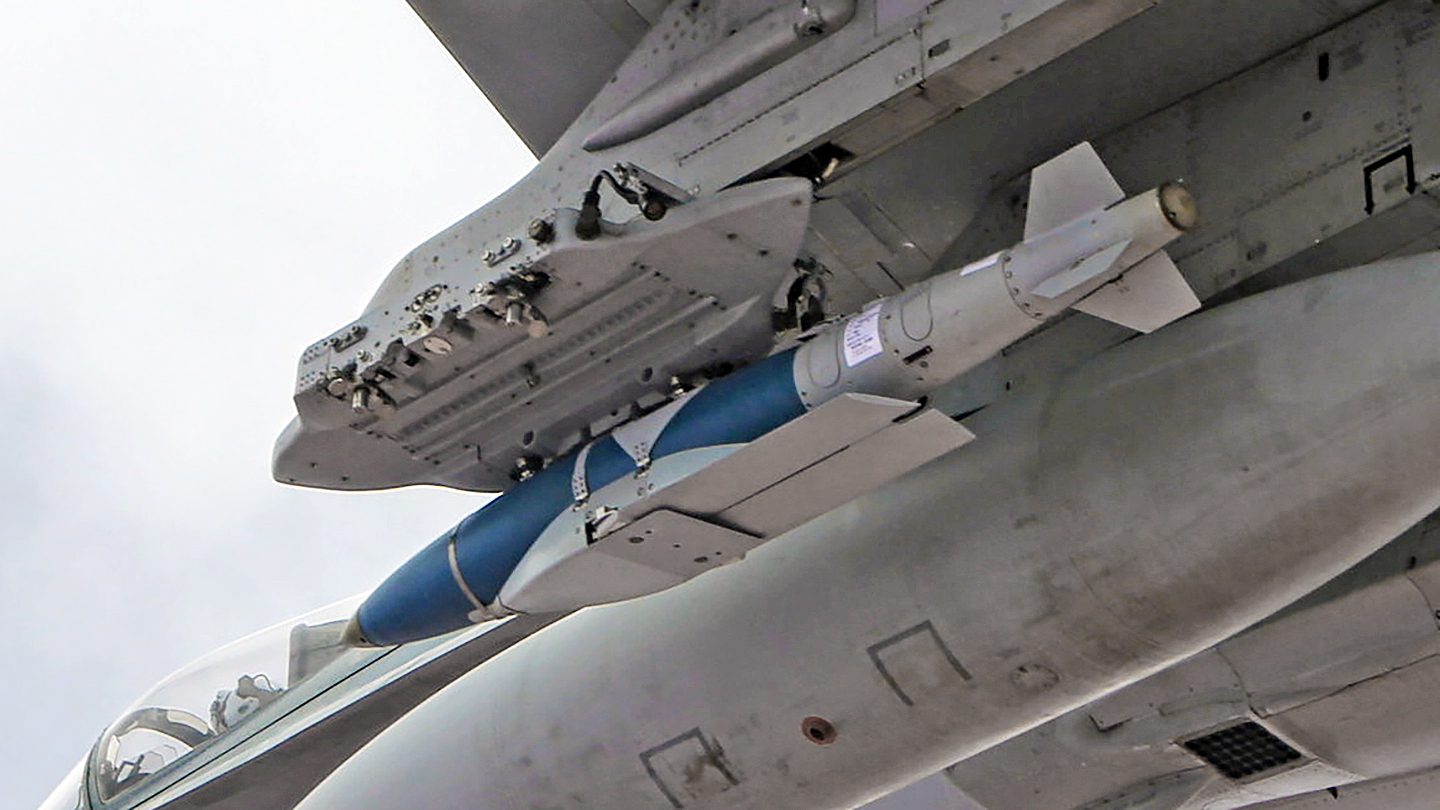
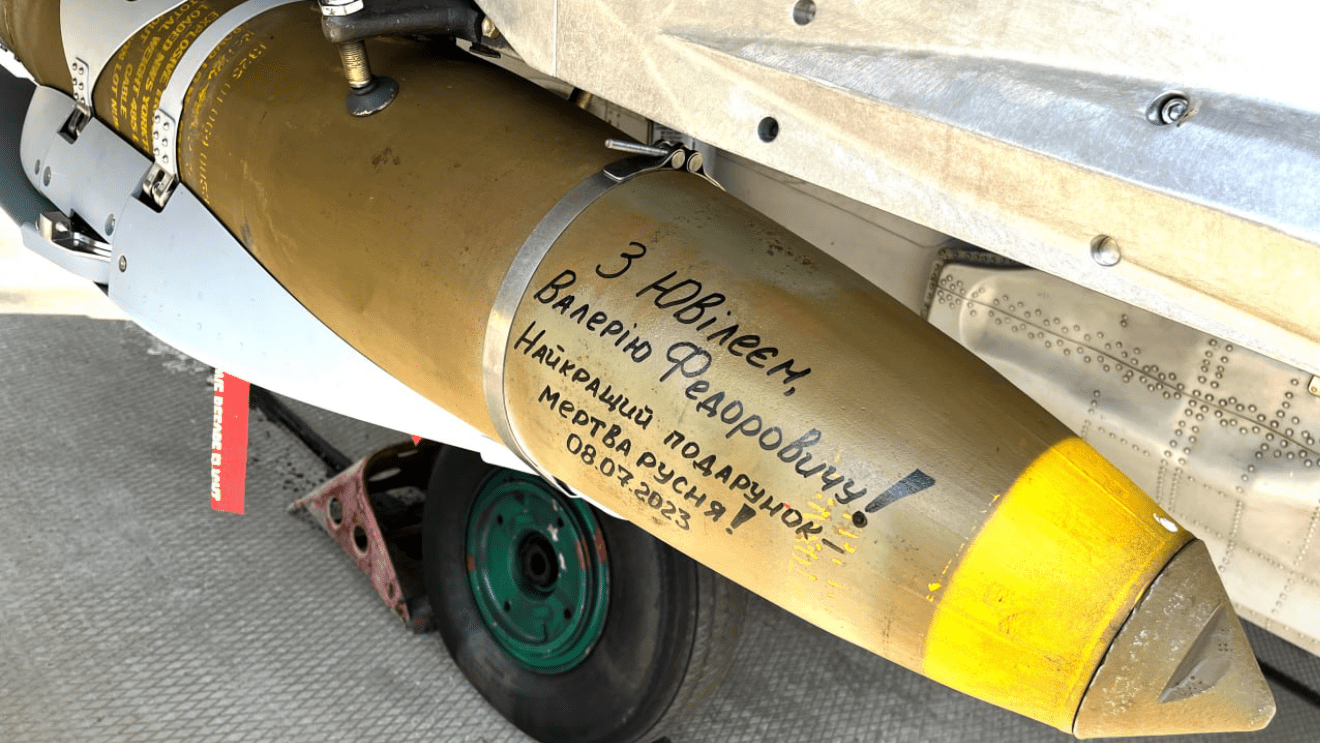
Russia presented its equivalent of the JDAM for the first time at the Farnborough Airshow in England in 2002. At that time the Bazalt company proposed four types of MPK modules (without the “universal”) for the FAB-500M-62 bomb, with gradually increasing capabilities (and price). GNPP Bazalt (Gosudarstvennoye Nauchno-Proizvodstvennoye Predpriyatiye, State Research and Production Enterprise) in Moscow is a leading company developing general-purpose bomb ordnance in Russia.
The simplest MPK variant was based on an unfolding wing with a span of up to 6.5 feet. The bomb was stabilized aerodynamically and had no guidance. The aim was to extend the range: using the wing, the bomb was supposed to reach a distance of 3.7-5 miles when dropped from a low altitude of 164-328 feet.
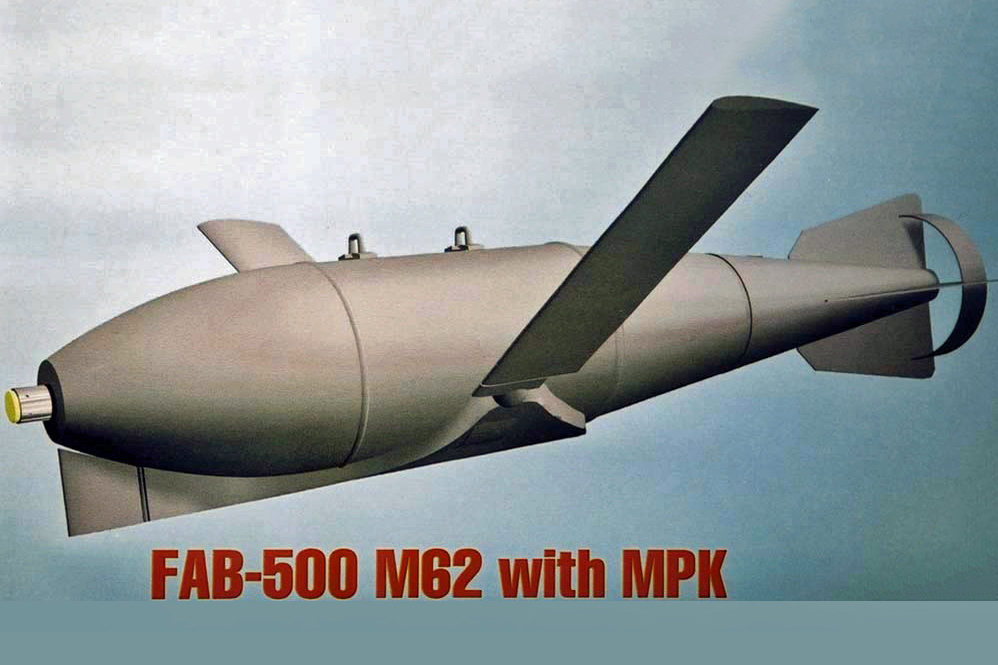
In the second variant, the bomb was to additionally receive a simple inertial navigation system (INS) enabling sufficient accuracy for a range of 7.5-9.3 miles from the target.
In the third variant, the INS would be supplemented by a satellite navigation receiver for further correction, enabling an accuracy of 33 feet when dropped from a distance of 25-37 miles from high altitude.
In the last and most advanced variant, a pulsejet engine was to be fitted, extending the range to 50-62 miles.
For several more years, Russia presented the MPK module at international exhibitions. The project was reworked fairly significantly several times, but it was never put into production. In fact, it’s not known whether the MPK module went beyond the general design phase at all at that time — all that was shown were drawings and models.
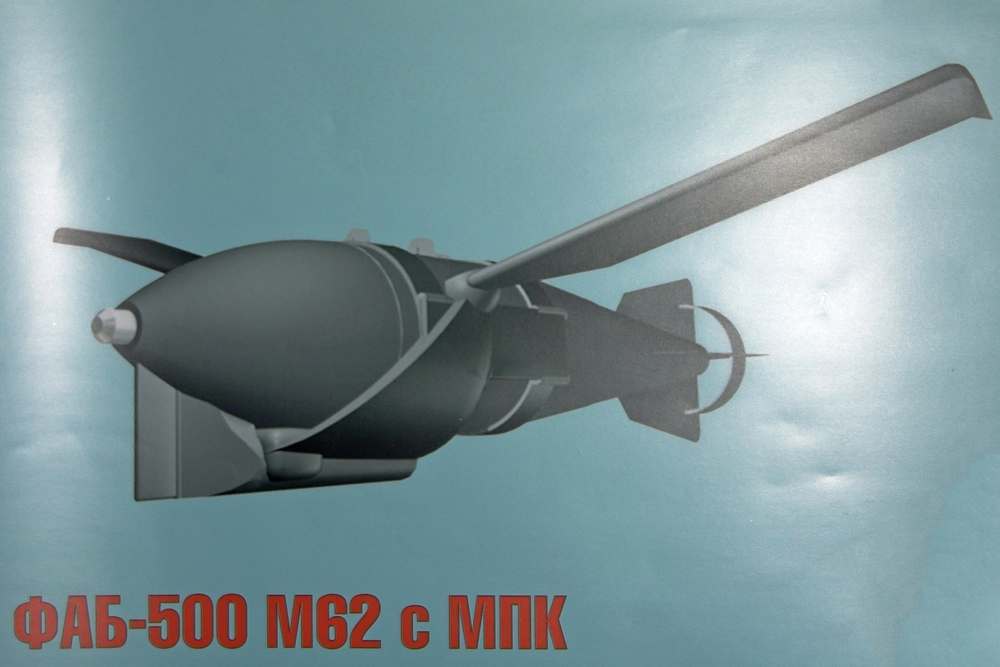
Why did Russia not complete the Bazalt MPK project back then? There are probably two reasons. First, it seems Russia never expected to be involved in a sustained war in which it would need weapons in very large quantities, and therefore at low cost. Secondly, it is probable that no one in Russia was interested in making cheap kits if they could earn more by offering expensive new guided bombs. Bazalt’s proposals were created on the principle: if America has something, we must demonstrate it too.
The most serious technical shortcoming with the Russian MPK/UMPK kits is that in contrast with U.S. aerial bombs, Russian general-purpose bombs are welded monoliths. It is impossible to remove the tail section and replace it with a guidance unit, as is the case with the JDAM. The Russian module is a self-contained flying device to which a bomb is attached. On the other hand, the Russian module can be fitted to the bomb directly by the operating unit, and not necessarily in a repair or production facility like with JDAM.
Makeshift device, limited performance
There are only a few illustrations showing FAB-500M-62 bombs with the UMPK module in its entirety, including a video of two bombs being dropped by a Su-34 fighter-bomber. The War Zone examined this footage in some detail when it first appeared earlier this month.
More prevalent are photos of bomb debris that fell and did not explode at various locations in Russia and Ukraine.
In the official multimedia provided by the Russian Ministry of Defense, UMPK modules have still not been shown even once.
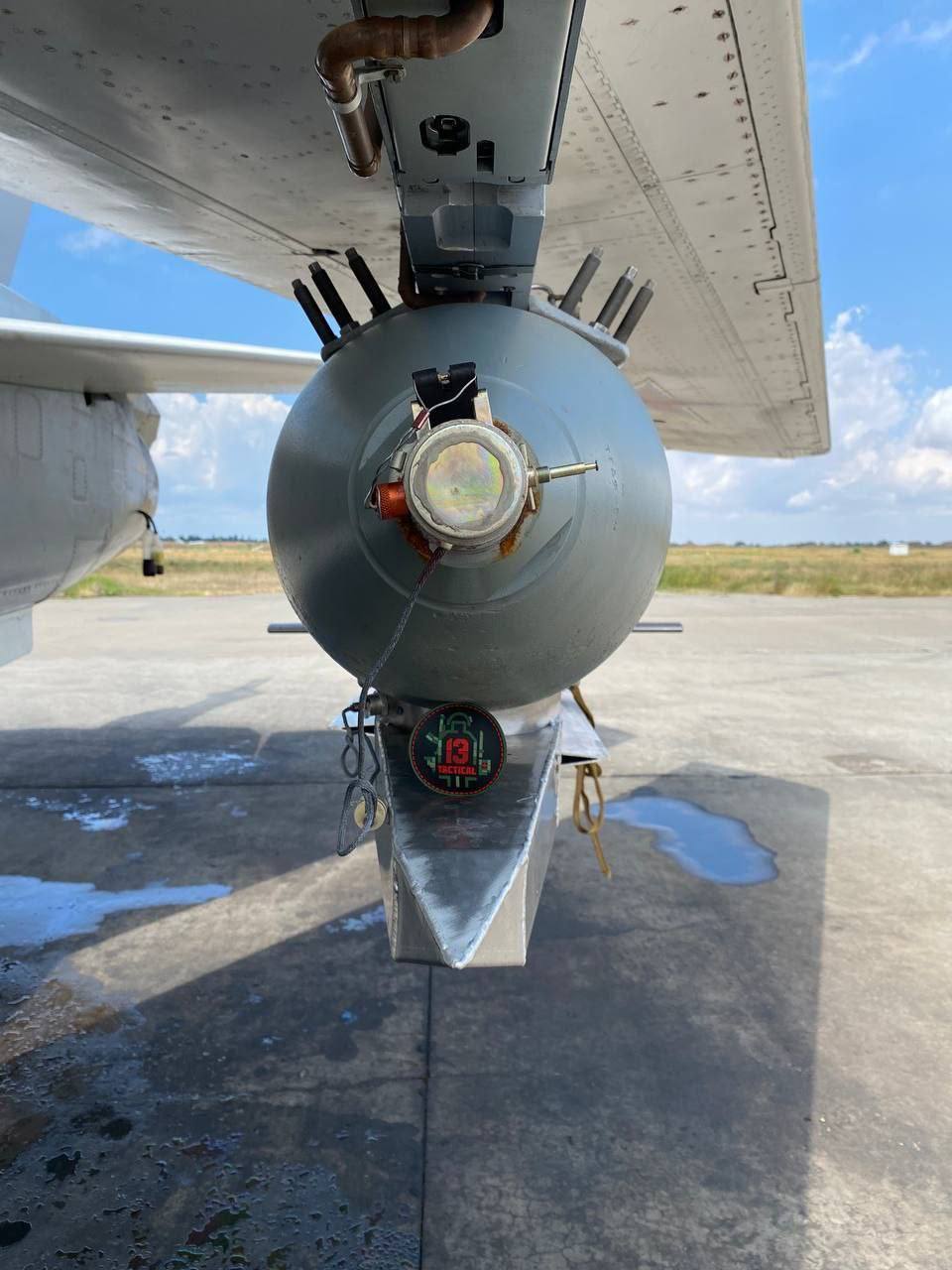
From the available illustrations, it can be seen that the UMPK is a makeshift device, made hastily and quickly thrown into combat, without carrying out the full required tests. It is not known what company makes the current UMPK modules, but it’s unlikely that it is the GNPP Bazalt company that designed similar modules 20 years ago or the GNPP Region company that makes all Russian aerial guided bombs.
An online critical analysis of the UMPK module, conducted anonymously by an employee of a Russian company, who deals professionally with similar topics, suggests poor performance and a high failure rate.
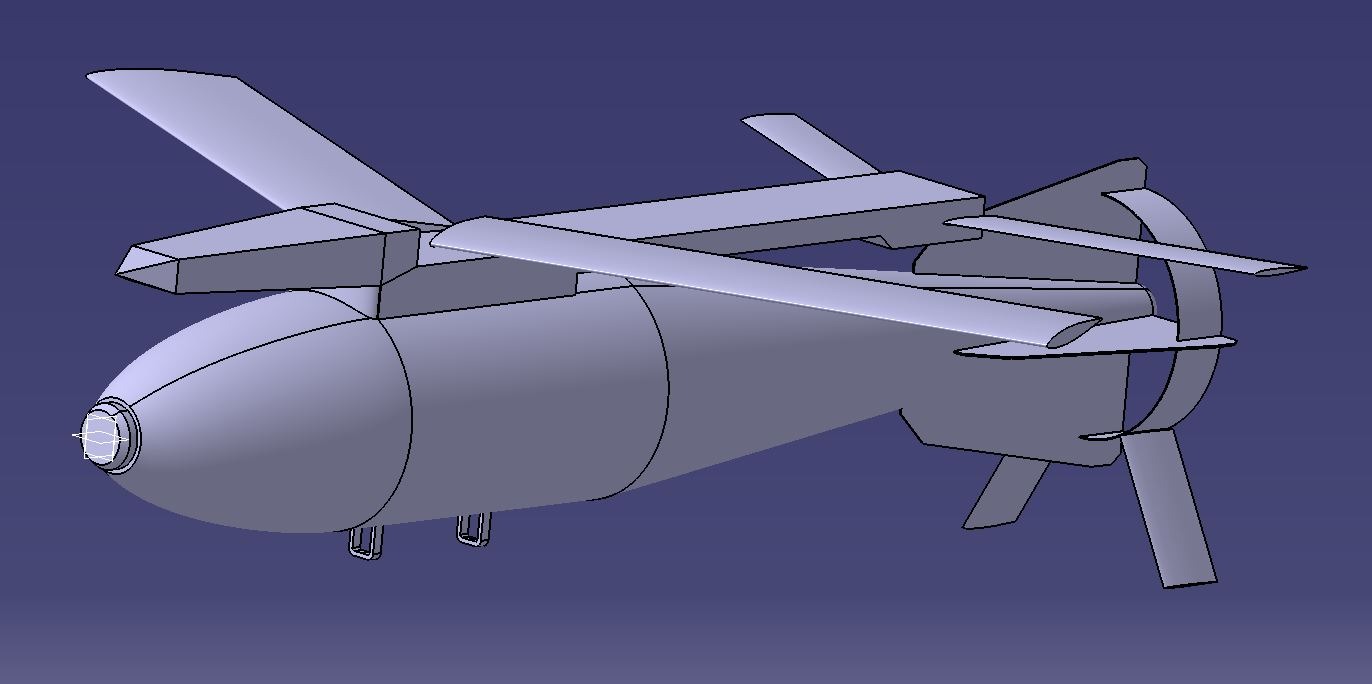
The same source indicates that after attaching the UMPK module, the weight of the FAB-500M-62 bomb actually exceeds the load capacity of the most common Russian weapon pylons, which is 500 kilograms (1,102 pounds). This may cause the bomb to detach during maneuvering.
The wing is opened after the bomb is dropped by a spring hooked to the locking mechanism. The wing opening mechanism is unreliable and “the fact that the wing is not brought into flight position is a standard occurrence for this product.”
Another disadvantage of the UMPK is that the bomb’s fuse is switched to ‘ready’ as in an ordinary bomb, i.e. at the moment of separation from the aircraft (in other winged bombs the fuse is activated later, during the glide). This means that if the wing does not open, the bomb can fall and explode, including on Russian or Russian-controlled territory. This is what the people of Belgorod faced on April 20 in an incident you can read more about here.

According to the same source, the wing’s aerodynamic characteristics are poor, and the actual flight range achieved by the FAB-500 bomb with the UMPK module is “much smaller” than has been assessed on social media (where the range is said to be up to 44 miles, similar to JDAM-ER).
Fighterbomber also claims the UMPK is a makeshift device that still needs a lot of work. “Of course, it has flaws, because it was made in a rush,” it states.
In the above-mentioned incident in the Russian city of Belgorod that took place on April 20, a Russian Su-34 lost two FAB-500 bombs over the city, a distance of 25 miles from the Ukrainian border. One bomb exploded injuring three people and damaging nearby buildings and vehicles. The second bomb failed to explode and was found two days later in its entirety, 820 feet from the first one, at a depth of 23 feet.

FAB-500M-62 bombs with UMPK modules have fallen unplanned on several more occasions. There is evidence of these bombs falling on March 12 in Donetsk, on March 24 in Sumy Oblast, and on April 25 in Belgorod Oblast.
Satellite guidance
For a long time, it was unclear how the bomb was guided or if there was any guidance at all. Doubts were dispelled on July 13, 2023, when the first photos of a dismantled UMPK module appeared, showing the Kometa-M antenna associated with a satellite navigation receiver.

The first antenna of the Kometa family for satellite navigation receivers was developed by the VNIIRT Progress company in Moscow 16 years ago; at that time, the device weighed 88 pounds. Gradually, the device’s performance increased, and the weight decreased. The Kometa antenna is used for receiving GPS/GLONASS signals even under conditions of heavy countermeasures. It has four elements, thanks to which it can separate the interference signal and ‘cut it off.’ According to the manufacturer, the antennas in this series increase resistance to interference by 40-50 decibels, which corresponds to a reduction in the range of interference imposed by the enemy by a factor of 100-300, i.e. up to several hundred yards.

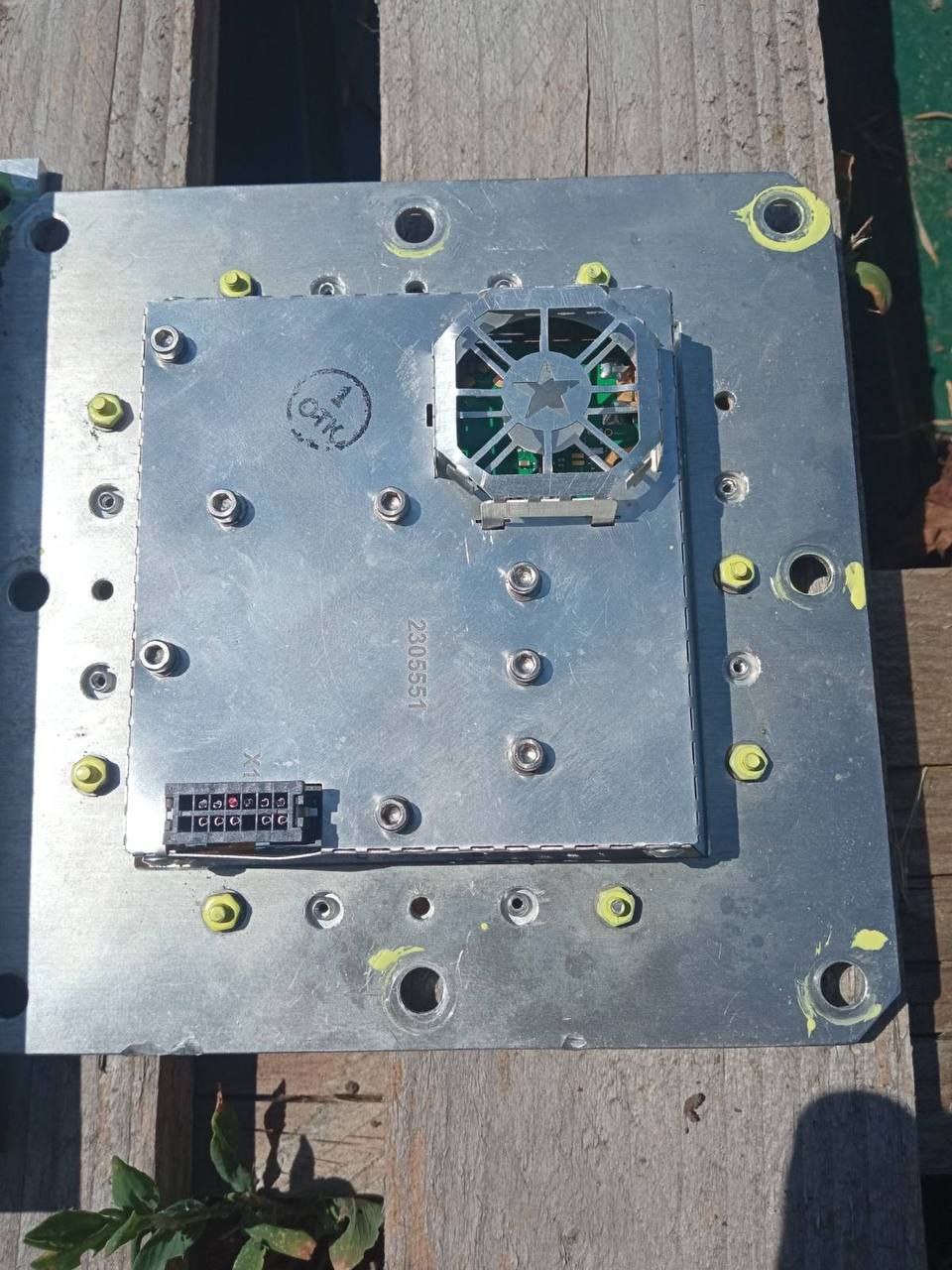



The Kometa-M antenna, now installed on the UMPK module, was created between five and seven years ago, especially for small drones, including the Orlan-10 and Orlan-30, and weighs less than five ounces. There are also related antennas for crewed aircraft (Kometa-A), ground vehicles (Kometa-B), and others.
It will probably come as no surprise that the satellite navigation receiver mounted on the UMPK bomb has little in the way of Russian components inside and is made almost entirely of foreign parts. This has been a recurring factor in high-technology Russian-made weapons, including those that have been used in Ukraine. It’s also become a more significant problem since the introduction of stricter Western sanctions on Russia, something The War Zone has examined in the past.
Still, the level of accuracy these kits provide remains a question, but we do know they have leverage satellite navigation to hit their intended targets.
Different-sized versions
Both the MPK module made 20 years ago and the current UMPK are mounted on the FAB-500M-62 (Fugasnaya Aviatsionnaya Bomba, high-explosive aerial bomb, 500kg, model 1962), the most popular Russian general-purpose bomb. On May 3, 2023, the TASS news agency, citing “a source in the defense industry,” reported that wing and guidance kits for smaller 250-kilogram (551-pound) bombs are also being used in the war in Ukraine.
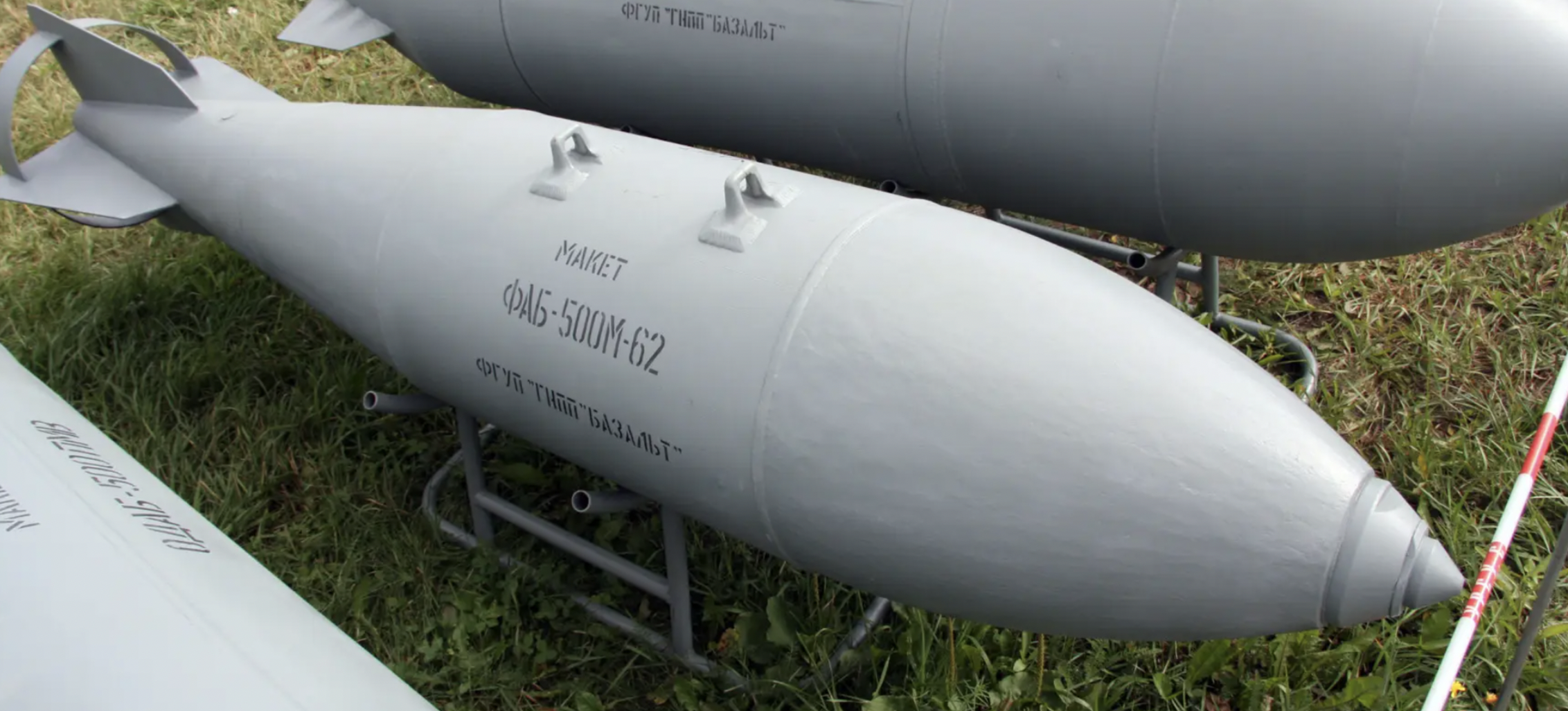
According to Fighterbomber, a UMPK module for a heavier 1,500-kilogram (3,307) bomb will also be available for use soon.
As we predicted, more information is finally now coming to light about Russia’s ad-hoc standoff bombs. While these bombs clearly suffer from several shortcomings, the Russian Aerospace Forces’ demand for weapons that can be launched at a safer distance from Ukrainian air defenses, and the tempo of airstrikes in general, mean that we are likely to see more of these weapons used in future, including in different sizes.
Contact the editor: thomas@thedrive.com
